|
If you’re doing any video and using a DSLR, you’ll want to get yourself an external microphone. While today’s DSLRs shoot very nice video, the microphone is not great and the produced sound tends to sound as though those you are recording are sitting in a metal garbage can—very tinny and a lot of echo. You can purchase external mikes but they can be expensive. I recently started shooting video and instead of purchasing an external microphone, I decided to use my iPhone. Don’t discount your iPhone as an external mike—the sound quality is surprisingly good! To make things easier, I downloaded an app called Voice Record Pro (available on iTunes). The app is free and the files are downloadable from your phone and can be imported into iMovie, which is the video editing tool that I use. The audio quality is wonderful and the app is very easy to use. The only thing I did do is purchase a small tabletop tripod for my iPhone so it sits upright during recording. You can see it in the photo. Free, easy to use, good quality: what more can a girl ask for! So, the Voice Record Pro app is my Friday Find and Fave. If you’re starting to do some video, be sure to check it out! Here are the links:
Voice Record Pro Kenu iPhone tripod
0 Comments
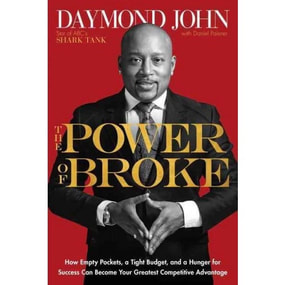 Daymond John’s “The Power of Broke” isn’t necessarily a collection of new advice but rather common sense offered in an authentic, easy to read book that also adds his own SHARK Point Basics. The book tells the stories of a variety of entrepreneurs, as well as offering up John’s entrepreneurial story. It also preaches that being broke should make us hungrier for success. When we are handed something without struggling for it, we waste those resources. I found several favorite stories in the book, including the story about about professional skateboarder and entrepreneur Rob Dyrdek. Johns says Dyrdek ultimately found success by “being real, being genuine, and being relentless in pursuit of what he wanted.” “Relentless in pursuit..." Isn’t that what perseverance is? As business owners and entrepreneurs, there are always going to be times when we want to give up. No matter how hard we work, how much we try, where we advertise or how we market, we meet with resistance of some sort. It’s those times when we need to persevere… be relentless in pursuit of what we want. It is the same when training for a race, no matter the distance. We have to be relentless in every detail, from nutrition to training, from rest to mindset. If we want to PR or get on the age group podium, we need to persevere through the crappy runs, bad weather and time management issues that crop up. This doesn’t mean we overtrain or run through injuries—it means we persevere through those difficulties. It is the same in entrepreneurship. Do you know what you want? Do you know your purpose? If you want it bad enough, you need to persevere. As Monday’s quote said, “Perseverance is not all one race; it is many short races one after the other.” In training for a race, you have many short “races” you do before your actual race: speed work, easy runs, nutrition, adequate rest… all of the things you need to work toward a PR. As a business owner, you are going to have short races every day as well: finances, marketing, getting your product out the door, paying your employees. You keep working toward what you want. You persevere. You relentlessly pursue your goal. Are you a small business owner without a marketing department? Are you frustrated or confused about marketing your business? Contact me to develop a marketing plan, marketing budget, or marketing content calendar that will help make your life a little easier! 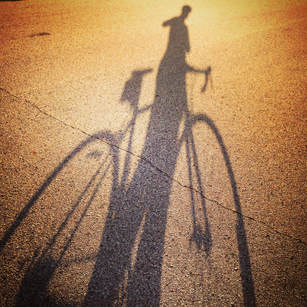 I recently watched a great TED talk by Caroline Paul about encouraging girls be adventurous. My most recent adventure was biking the Elroy-Sparta trail; however, I grew up riding horses. As a matter of fact, from ages 4 to probably 7, I was turfed on a daily basis by a recalcitrant (i.e. typical LOL!) Shetland pony who found great joy and pleasure in finding new and innovative ways to have me meet the dirt. My parents were always watching but they weren’t overprotective by any means. If I fell off, I was expected to get up and get back on unless I was seriously hurt (which never happened; mostly, my pride was a bit dented!) So that’s what I did. It’s that lesson that I took with me into adulthood as well. If you fell off, you got up, dusted yourself off and got back on, whether it was a failed relationship, a job loss, a business setback. I tried to raise my daughter in the same way. Yes, I told her to be careful when she was heading into situations where, as a female, you just need to pay attention (an unfortunate fact of life, but a fact nonetheless.) When she fell off one of the horses, I asked her if she was okay and then boosted her back up on the horse. I believe it’s a lesson that has helped her succeed with her new business and her life. She is willing to adventure outside of her comfort zone and take risks, just like her momma. What about you? Were your parents always telling you to be careful when you went outside to play? If they encouraged you to be adventurous, how do you think that has helped you succeed in life? 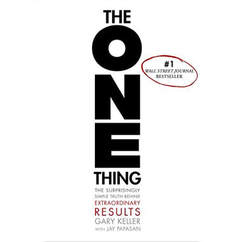 What is your one thing? Your purpose? This is the question Gary Keller’s book, “The One Thing” asks of you. I just finished the it and although “The One Thing” and my SELF Journal are not related, they do intertwine. Keller’s philosophy is we need to find our one big thing. This is our purpose and we need to set priorities in order to achieve that purpose. The priorities are the steps we must take to realize our purpose. This is not unlike the SELF Journal philosophy, which asks us to choose a big goal(s). We then set down the steps and daily targets we need to do to achieve that big goal. Both philosophies stress that we should not live for the “to do list” nor should we place importance on multi-tasking our way through life. We should instead focus on the end goal, our One Thing, and do the daily steps necessary to reach that destination. Keller says, “Live with purpose and you know where you want to go. Live by priority and you’ll know what to do to get there.” Makes sense, doesn’t it? If you get a chance, pick up the book. It will make you think about your purpose and maybe help you do more than go through the motions of the day. 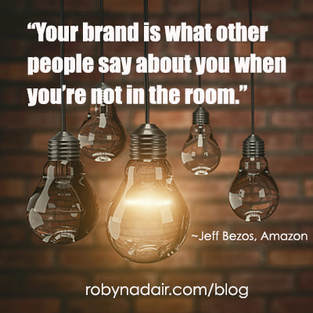 What does your employer brand say about your organization? What do your employees say about your employer brand? If you haven't given any thought to it, you should. Your employer brand will continue to play more and more of a role in attracting and keeping talent. Your organization’s brand and your employer brand are intertwined. Many times, potential employees may also be customers. Your organization has already developed brand attributes (or at least it should have.) You should look to those attributes to create your employer brand. Do you have a marketing department? Involve them in the development. The brands should be consistent with each other and working with marketing will help maintain that consistency. If you don't have a marketing department,here are three points to keep in mind when developing your employer brand: 1) Be specific. What pain points does your consumer brand solve? How do your employees play a role in solving a client’s pain points? Stick to that. Your organizational mission may be fairly vague or generic but your employer brand needs to be specific, just as your consumer brand is specific. Don’t try to be all things to all people. 2) Be self-aware. Take a look at what is really happening in your organization. What do your employees say about your organization and brand? Why are people successful within your organization? If your employees don’t understand the organization’s purpose, mission and values—or worse, don’t care—you have to ask yourself, where is the disconnect? And how can that disconnect be reconciled? Do your current employees know why their job is important to the organization’s purpose, mission, values—and ultimately, its success? What message are they sending out to clients, potential clients and also potential talent? It isn’t always fun to take a hard look at what isn’t working within your organization, but those employees are also your brand ambassadors. 3) Be consistent. Your employer brand should be consistent with the consumer brand. This includes everything from the brand’s promise to its elements. And there must be consistency within the employer brand. For example, let's talk about voice. What is voice? It’s the tone of an organization's communications (i.e. formal vs. informal.) That voice needs to be consistent on all channels of communications: social media, website, email campaigns, and any other consumer/employee touch points. If your organization presents itself as down to earth and informal in social media, it would be inconsistent to take a very formal tone in the company newsletter. An inconsistent voice confuses and potentially alienates potential consumers/employees from your brand and comes across as inauthentic. Following these three tips can help make developing your employee brand an easier process. If you're overwhelmed, let me help develop your employer or consumer brand! 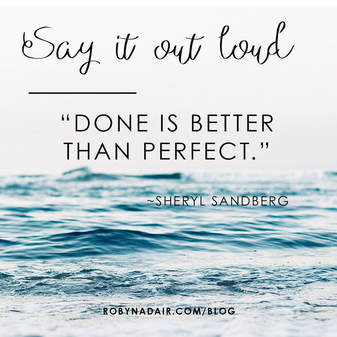 I love HGTV. I love watching the remodels, the fixer uppers, the new home builds take shape over 30 minutes. Mostly, I am amazed by how quickly the homeowners or buyers are able to make decisions regarding paint colors, floor plans, or fixture options. And then, voilà, seven weeks later, they are in their new home and everything is beautiful… and done! Now, I know there is more to it than can fit into a 30-minute show. I’m sure there is some hemming, hawing, tears and temper tantrums that aren’t filmed. However, it took me years just to decide what color I wanted to paint my living room walls. Finally, after 10 years of false starts with paint chips and living with just white primer, I made a decision, chose a color and painted the damn living room over a weekend. And it felt so good to be able to check that chore off of my to-do list. Was it a perfect paint job? Did I absolutely love the color? Would I have chosen that same color again? Nope, nope and nope. But, it was done. I didn’t have to walk into the living room anymore, frowning at just white primer on the walls walls and feeling guilty that I hadn't gotten the job completed. It wasn't perfect but it was done. That’s the problem with perfectionism. It is immobilizing. A task, a story, an idea is started but then the tweaking happens. “This doesn’t sound right; I need to rewrite it.” “The elements in this design don’t seem right; I need to fix it.” “Oh heck, maybe I’ll just clean the house instead!” Folks, there is no perfect time or place. There are no perfect colors or styles. Perfectionism gives you only anxiety, avoidance, indecision and ineffectiveness. Struggling to complete a project? Fine. Stop and admit that you're struggling. Take a breath. Make a pros and cons list. Do your research. Dot your “i’s” and cross your “t’s” but stop tweaking and in the words of Nike, “Just do it!” If you wait for the perfect time, place, thing, person or idea, it may end up being too late. Take initiative, gamble a little, choose the paint color and finish the job. You’ll feel much better about the task and the outcome once you can check it off as completed, because, in the end, “done is better than perfect.” 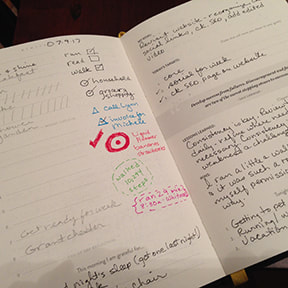 I have used a day planner my entire adult life. I began using one in my first real job when I was introduced to the Franklin Planner (before Steven Covey, yes, I’m that old!) I went to the seminar, learned the tips and tools of goal setting and planning and I was hooked. At the time, I worked in a human resources department and was teaching time management. Incorporating a day planner into my life was a lifesaver and I have used some version of day planner ever since. I found the SELF Journal on, where else, Facebook and was intrigued enough to hand over my money. I made the purchase and once I received it, promptly stored it away in the closet… and forgot about it. Poor journal. But there comes a time in life when when what you're doing just isn't working anymore and you need to pivot. I sat one Friday night, mulling over a particularly frustrating week. I felt stagnant, health wise and mentally. Remembering my purchase from the winter, I dug the still-boxed SELF journal out of the closet and read the how-to’s. I did some soul-searching and then forced myself to actually formulate two goals with coordinating details and steps. Those details and steps are so important. They break the big goals down into small achievable steps. I have been using my SELF Journal for a little over 2 weeks. It takes commitment and consistency, hallmarks of the product. Did I achieve every daily target, weekly goal, and habit I had written down? Hell no! As a matter of fact, for the first week of habits, I only achieved one: writing 400 words or more for 5 days. I was off by a day or so on several other habits and one I didn’t get done at all. Some days I’d finish all 3 target goals; other days, I wouldn’t achieve one goal, although I completed at least two most days! The beauty of the SELF Journal is you start and end your day with gratitude. You get to brag about your wins every night while also acknowledging what you can do better. And at the end of the week, you review your progress, write about your successes, and note where progress was weak. And then you adjust for the next week. I learned two important things on this new journey: 1) Use pencil for your actual schedule because plans change, meetings get cancelled; and 2) if you are repeatedly missing a target goal, day in and day out, you might rethink that target goal, and ultimately, your big goal. One of my big goals was to run a fast fall 5k. It required running at least five days a week, strength training and all of the prehab I need just to keep moving forward. After weeks of missing scheduled runs, dragging myself out to run because it was scheduled and making myself feel guilty because runs weren’t going well, I realized I was burned out! Last summer’s marathon training was a beast and I just wasn’t feeling it this summer. So I pivoted—I’m running for fun this season and finding my groove in other physical pursuits: biking, yoga, and hiking. I feel better about my goal and it’s achievable. I’ll keep updating my SELF Journal progress. So far, I’m hooked and finding that it does help me focus on my big goals. Want to check it out for yourself? Click here to visit the Best Self website! 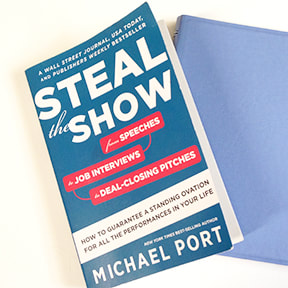 Former professional actor, keynote speaker and author Michael Port has authored several best-selling books but it is his latest, Steal the Show, that caught my eye in an airport bookstore. Rather than just giving the reader a list of do’s and don’ts when addressing an audience, Port has created a helpful, entertaining and eye-opening approach public speaking. How many times have you watched a presentation and been annoyed by a presenter’s jangling jewelry or incessant nervous ticks or bored to tears by endless cluttered, text-stuffed slides? As a speaker and speaking coach, I have always maintained that anytime you are presenting to an audience, you should consider it a performance. The speaker should consider everything from clothing, props, mannerisms and slides as important tools that should complement, rather than take away from, his or her presentation. Port also views the giving of a presentation as a performance. He cleverly uses his acting background to help people learn to be performers, including information on everything from rehearsal and stage blocking to lessons on using improvisation, allowing the reader to think on his or her feet for every and any eventuality. Do you have an upcoming speech? Maybe a wedding toast? An important sales pitch? Or a job interview you want to ace? Pick up Steal the Show. You will come away from the book with quite a few ideas for delivering entertaining, informative and inspiring presentations. Implementation of even a few of Port's suggestions will put you on the path to being a better speaker. 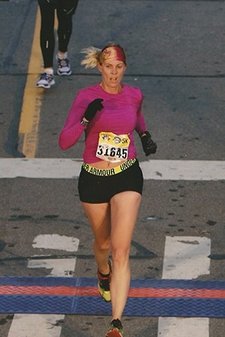 I could have raced on July 4th in a local 5k. It was a small race on a flat and fast course. Who turns down an opportunity to race locally on a fast course? I did and now I’m more than a little disappointed in myself. My reasoning for not running? I’m not in peak shape and my time would have probably been quite a bit slower than typical. My thinking after I went on my run at 8:30 later that night? Hmmm, this probably wouldn’t have been as bad as I originally thought and even if it was slow, so what? Last week, a friend of mine posted a photo of herself in her swimsuit and talked about body image and negative self-talk. She looks great, and by the way—her body has taken her through both a full and a half Ironman, among many other races. The moral of her post? You be you, because you is pretty awesome. That same day, I met with a young lady who is a personal trainer at my health club. We talked about my training goals and I complained about how slow and sluggish I have been feeling lately and if I could just get back to racing weight, I could run as fast or faster than I did in my fastest 5K two years ago. She reminded me that I was comparing myself with myself from 2 years ago, and was that really healthy? A few days earlier, I had also been complaining to my 26-year old daughter about how slow and unfit I have been feeling. She asked me where I got my warped sense of body and fitness, and was that really healthy? I know better. I wouldn’t put this kind of pressure on any of my athletes. So why am I putting this kind of pressure on myself? I have run multiple ½ marathons, a full marathon last November and too many 5Ks to count. Many of those 5Ks resulted in podium placings for my age group and solid PRs. This body has also grown and birthed my beautiful daughter. It took 3 young, smart ladies with very healthy attitudes to remind me of just how capable this body of mine is. And so Emily, I will be me. And Audra, from now on, the only comparisons I will be making will be the time from my first 5k of the season to the time from my goal race of that same season. And Cecilia, I will do my best to not have such a jaded view of this pretty damn athletic body. And to the two ladies who kindly cheered me on during my run the other night, thank you, thank you, thank you! Next time, I will just run the race, no second guessing, no qualms.  I have started working with a personal trainer one day a week. Today marked my third week of work with Matt, who is our throws coach for track and a certified personal trainer. Quite frankly, he’s kicking my butt! Typically, we concentrate efforts on olympic lifts: bench press, dead lift, hang clean, squats. These lifts strengthen upper and lower body and core, while also helping improve explosiveness. As a track coach, I also focus on olympic lifts. Runners need to be able to get out fast and sustain pace on tired legs. The olympic lifts work well with our schedule, particularly as we get deeper into the season. I've found I get more bang for my buck when my athletes can focus on those lifts. I also have limited time for my own workouts and goodness knows, I need to improve my strength and explosiveness. But doing the same thing every week gets boring and Matt came up with something different today. And that is where the dreaded burpees came into play. Today's workout was a core circuit that included Russian twists, bicycles, suitcases, shoulder taps and the dreaded burpees. The challenge was to cycle through each exercise, 10 of each, (except for those stupid burpees—only had to do 4 of those, thank God) keep repeating them for 3 minutes, then run for 3 minutes and rest for 3 minutes. I went through the circuit 3 times. I hate burpees. And my burpees form sucked! By the last circuit, I could barely get back up from the pushup position. Honestly, I don't think I’ve never been so happy to run in my life! I had just been complaining to a friend that I have really struggled with running lately. I’ve felt like I did when I first started running; every step was a miserable fight. However, today, running felt easy compared to those damn burpees! I was even able to finish up the rest of my 20 minute run after the workout. Progress is in evidence. Well, except for the freaking burpees. Now, I suppose I could just say to Matt, “Hey, can we substitute squats or something for those ridiculous burpees?” After all, I’m paying him to put together my workouts. And I’m far away from being a youngster who recovers quickly. But what would that solve? So burpees are now my challenge to face and overcome. By fall, I hope to have some decent form when doing burpees. Maybe they will eventually become easier. Maybe I’ll even like them at some point. But today, I hate burpees—every single one of them! |
Robyn AdairSenior Portraits Archives
June 2023
Categories
All
|
 RSS Feed
RSS Feed